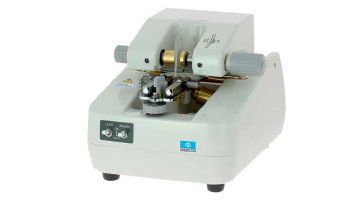Medical Use of lens edger and the Reasons for Its Successful Utility
Cataracts are defined as impaired vision due to optical disturbance in the eye lens. The term cataracts is preferable when cataracts are often mixed with green stars related to glaucoma. If the information transmission in the eye’s optics would be perfect, the contrast in the image on the retina would be identical to the contrast of the viewed object. In practice, a little bit of contrast is lost in optical image transfer. Because the contrast in the image on the retina’s surface is reduced in cataracts, the patient becomes more difficult to see objects with small contrast differences. This becomes particularly noticeable in the dark when the pupil becomes large and a larger surface of the cloudy lens is exposed to incident light that is spread.
Epidemiology
According to the WHO’s latest estimate, 39 million of the world’s population suffers from double-sided blindness, 51 percent of which are due to cataracts.
In epidemiological studies, cataracts are usually classified as bark cataracts, nuclear cataracts, posterior subcapsular cataracts or mixed types.
Risk Factors

Epidemiological studies of risk factors for cataracts show that age is the most important risk factor for the appearance of all major clinical types of cataracts (Figure 3). The main influential risk factors are for bark cataract exposure to short-wave ultraviolet radiation and for nuclear cataract smoking [6]. Steroid use and ionizing radiation are well-known risk factors for posterior subcapsular cataract but were not studied in the cited study. Heredity was defined in these studies as verified genetic deviation that causes cataracts.
Prevalence of the major cataracts is increasing from the age of 50.
Importance of genome and environment
The risk factors set out in epidemiological studies of cataract explain only part of the overall incidence of cataracts. This knowledge has indicated that there are a number of unknown factors in the genome and environment that are relevant to the development of cataracts. Assuming that siblings grow up in a similar environment, variation in quantitatively measured cataracts of some type has been analyzed between monozygotic and dizygotic twins. Such studies have indicated that nuclear cataracts to about 50 percent are associated with genetic factors, to about 15 percent with individual environmental impact and to about 35 percent of age [12], and that approximately 55 percent of bark cataracts are associated with genetic factors, to about 30 percent with individual environmental impact and about 15 percent with age.
Lens structure
The lens edger of the eye is surrounded by a capsule that is biologically basal membrane for those cells that border the lens environment (Figure 5). The front cover of the linen cap is on the inside of a single-sided epithelium. At the waist of the lens, the equator, the epithelial cells differentiate into long cells, lens fibers, which form a bulb-like structure. New lens cells are formed continuously by cell division into the epithelium just centrally about the lens’s equator. The newly formed cells are shifted backwards towards the lens equator and are pushed toward the center of the lens. The core of lentils has a very high concentration of water-soluble proteins and has a firmer consistency than the environment, the lens bark. The concentration of water-soluble proteins decreases continuously towards the periphery. The protein concentration gradient is optically manifested as a refractive index gradient which decreases from the center of the lens towards the periphery.



